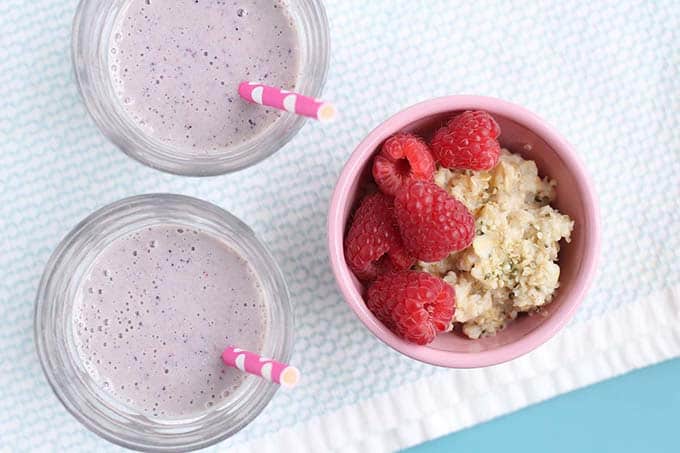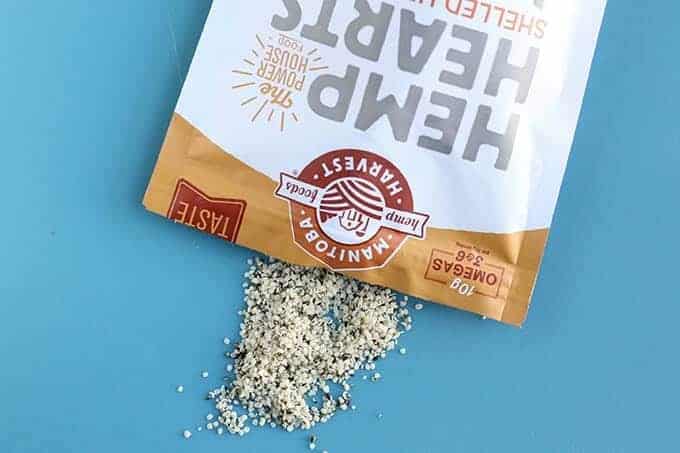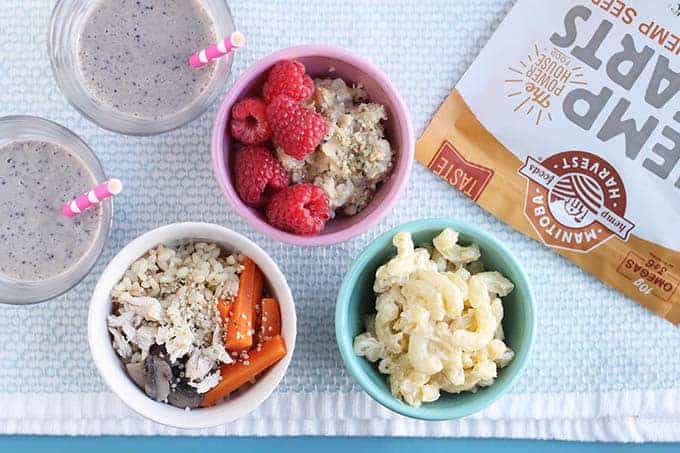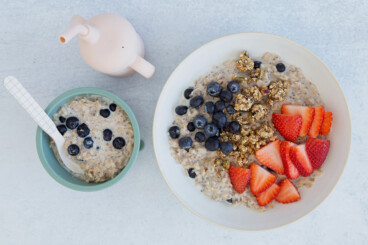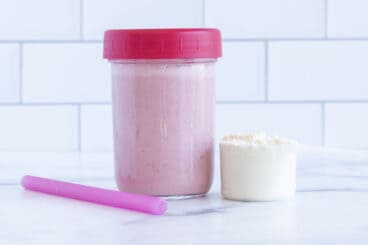Benefits of Hemp Hearts
I’ve been regularly using hemp seeds, which are often known as hemp hearts, for a few years to add nutrition to the food that I make for myself and my kids. They don’t require any advance preparation and are mild in flavor—so they are an easy addition to sweet and savory foods. They have all 10 essential amino acids, which is rare for a plant-based protein.
Hemp Seed Nutrition
Here’s a look at the nutrition in a 3-tablespoon size serving of hemp seeds, according to the USDA:
13 grams fat (with 12 grams of omega-3 and omega-6 per serving) 3 grams of fiber 10 grams of protein 20% RDA of iron Folate, manganese, zinc, and magnesium
I’ve relied on hemp seeds to increase my own protein intake during each of my pregnancies—I love that it’s just one single ingredient that’s easy to understand, versus something like a complicated protein powder—and it’s an easy way to balance out my kids’ meals. (Chia seeds are also an easy nutrition boost to add.)
Where to Buy Hemp Hearts
Look for them in the baking aisle of your local store.
How to Store Hemp Hearts
After you open a package of hemp hearts, simply seal it tightly and store in the fridge to keep them fresh.
Who should eat hemp seeds?
Hemp seeds—which I should mention are from a species of Cannabis sativa but are not the same as marijuana—can be served to adults and kids. They don’t have much flavor on their own, so they blend well into smoothies and other foods, and they are an easy way to add fiber and protein to recipes. I love that they don’t change the texture of foods, so they are easy to tuck into foods kids already like—versus a seed like chia or flax, which thickens whatever we add it to.
How much protein do hemp seeds have?
A 3-tablespoon serving of hemp seeds has 10 grams of protein. A smaller 1-tablespoon serving size has over 3 grams of protein, which is a nice dose given that toddlers only need 2-3 servings of protein a day.
What’s the difference between hemp seeds and chia seeds?
Hemp seeds and chia seeds are often used interchangeably, but they are pretty different in terms of nutrition. To start, hemp seeds have twice the amount of protein as you’ll find in chia and flax. Here’s a look at the breakdown:
Hemp seeds: 10 grams protein, 12 grams omega fatty acids, 3 grams fiber Chia seeds: 4 grams protein, 7 grams omega fatty acids, 10 grams fiber Flaxseeds: 5 grams protein, 9 grams omega fatty acids, 9 grams fiber
Looking at that list, you can get a better idea of which seed to use depending on which nutrient you may want to add more of. And there’s a giant difference in terms of texture—hemp seeds don’t thicken foods they’re added to like chia and flaxseeds can, so that is also a plus when adding to kids’ food since the food will still taste and feel the way it’s expected to.
8 Ways to Serve Hemp Seeds to Kids
These are the ways that we regularly use hemp seeds in our house, and how I like to incorporate them into the food I serve my kids. I’d love to hear your feedback or questions on hemp seeds, so please comment below with feedback.
Chia Seed Oatmeal
Favorite Coconut Chia Pudding
Protein Powder for Kids (Tips and Brands)
Favorite Protein Shakes for Kids (with Veggies!)
This post was first published June 2019.
